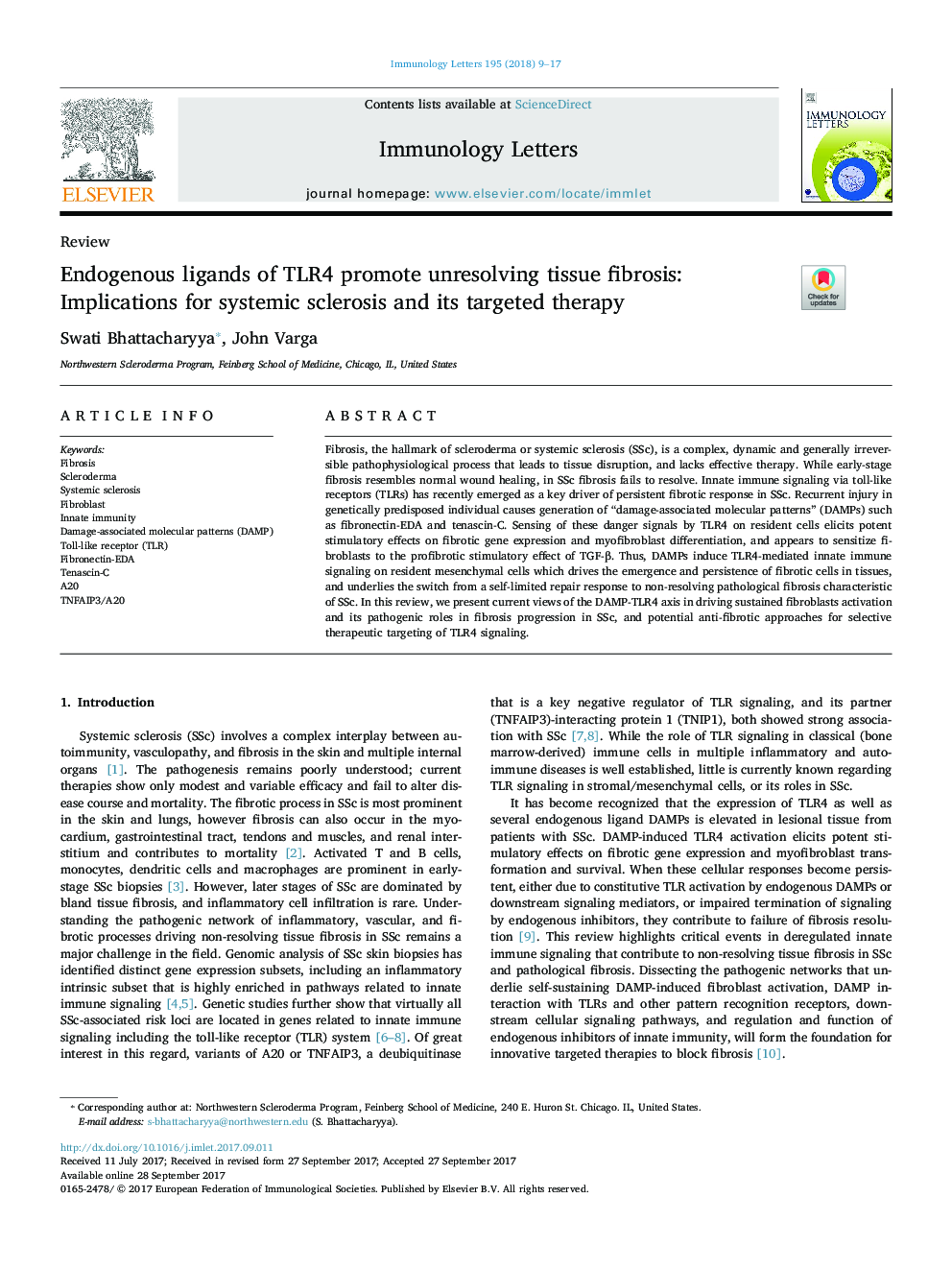| کد مقاله | کد نشریه | سال انتشار | مقاله انگلیسی | نسخه تمام متن |
|---|---|---|---|---|
| 8738353 | 1591531 | 2018 | 9 صفحه PDF | دانلود رایگان |
عنوان انگلیسی مقاله ISI
Endogenous ligands of TLR4 promote unresolving tissue fibrosis: Implications for systemic sclerosis and its targeted therapy
دانلود مقاله + سفارش ترجمه
دانلود مقاله ISI انگلیسی
رایگان برای ایرانیان
کلمات کلیدی
موضوعات مرتبط
علوم زیستی و بیوفناوری
ایمنی شناسی و میکروب شناسی
ایمونولوژی
پیش نمایش صفحه اول مقاله

چکیده انگلیسی
Fibrosis, the hallmark of scleroderma or systemic sclerosis (SSc), is a complex, dynamic and generally irreversible pathophysiological process that leads to tissue disruption, and lacks effective therapy. While early-stage fibrosis resembles normal wound healing, in SSc fibrosis fails to resolve. Innate immune signaling via toll-like receptors (TLRs) has recently emerged as a key driver of persistent fibrotic response in SSc. Recurrent injury in genetically predisposed individual causes generation of “damage-associated molecular patterns” (DAMPs) such as fibronectin-EDA and tenascin-C. Sensing of these danger signals by TLR4 on resident cells elicits potent stimulatory effects on fibrotic gene expression and myofibroblast differentiation, and appears to sensitize fibroblasts to the profibrotic stimulatory effect of TGF-β. Thus, DAMPs induce TLR4-mediated innate immune signaling on resident mesenchymal cells which drives the emergence and persistence of fibrotic cells in tissues, and underlies the switch from a self-limited repair response to non-resolving pathological fibrosis characteristic of SSc. In this review, we present current views of the DAMP-TLR4 axis in driving sustained fibroblasts activation and its pathogenic roles in fibrosis progression in SSc, and potential anti-fibrotic approaches for selective therapeutic targeting of TLR4 signaling.
ناشر
Database: Elsevier - ScienceDirect (ساینس دایرکت)
Journal: Immunology Letters - Volume 195, March 2018, Pages 9-17
Journal: Immunology Letters - Volume 195, March 2018, Pages 9-17
نویسندگان
Swati Bhattacharyya, John Varga,